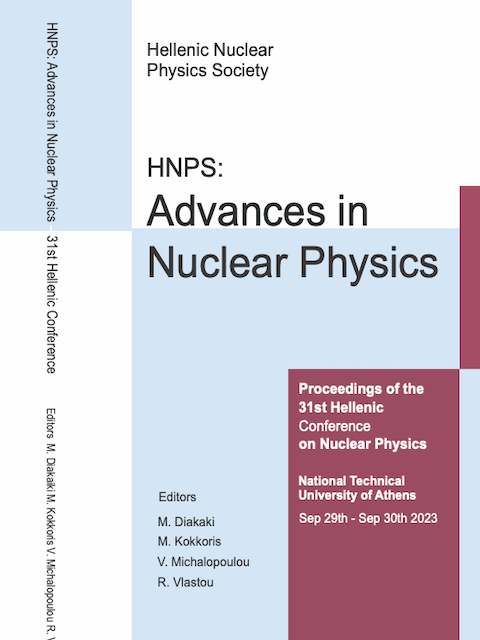Supramassive dark objects with neutron star origin
Περίληψη
Till today, the nature of dark matter remains elusive despite all our efforts. This missing matter
of the universe has not been observed by the already operating dark matter direct-detection exper-
iments, but we can infer its gravitational effects. Galaxies and clusters of galaxies are most likely
to contain dark matter trapped to their gravitational field. This leads us to the natural assumption
that compact objects might contain dark matter too. Among the compact objects exist in galaxies,
neutron stars considered as natural laboratories, where theories can be tested, and observational
data can be received. Thus, many models of dark matter they have proposed it’s presence in those
stars. By employing the two fluid model, we discovered a stable area in the M-R diagram of a
celestial formation consisting of neutron and dark matter that is substantial in size and vast in di-
mensions. This formation spans hundreds of kilometers in diameter and possesses a mass equivalent
to 100 or more times that of our sun. To elucidate, this entity resembles an enormous celestial body
of dark matter, with a neutron star at its core. This implies that a supramassive stellar compact
entity can exist without encountering any issues of stability and without undergoing a collapse into
a black hole. In any case, the present theoretical prediction can, if combined with corresponding
observations, shed light on the existence of dark matter and even more on its basic properties.
Λεπτομέρειες άρθρου
- Πώς να δημιουργήσετε Αναφορές
-
Vikiaris, M., Moustakidis, C., Vlasios Petousis, & Veselsky Martin. (2024). Supramassive dark objects with neutron star origin. Annual Symposium of the Hellenic Nuclear Physics Society, 30, 96–103. https://doi.org/10.12681/hnpsanp.6270
- Τεύχος
- Τόμ. 30 (2024): HNPS2023
- Ενότητα
- Oral contributions

Αυτή η εργασία είναι αδειοδοτημένη υπό το CC Αναφορά Δημιουργού – Μη Εμπορική Χρήση – Όχι Παράγωγα Έργα 4.0 4.0.






